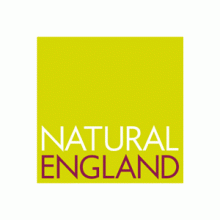News
Natural England and Yorkshire Water protect the region’s top wildlife sites

| Date | Tuesday, April 12, 2011 |
|---|---|
| Topic | Biodiversity & Natural Environment Sustainable Development Environment Quality of Life |
Yorkshire Water and Natural England have been working together to improve the fortunes of some of the region’s top wildlife sites.
Yorkshire’s Sites of Special Scientific Interest protect some of our most important wildlife, spectacular scenery and safeguard essential services such as clean water, flood prevention and carbon storage. These areas include much of our heather moorland, wildflower meadows, streams and wetlands and provide vital habitat for scarce species including twite, curlew, skylark, water vole, butterflies, reptiles and rare plants.
The Government set a target for all SSSIs to reach favourable or recovering condition by 2010. Defra reported in Dec 2010 that 98% of the sites are now in much better condition than they were five years ago.
Yorkshire Water own 11,500 hectares of SSSI and over the last ten years have brought 99% of their land into target condition by using the right type of land management.
Rachel Hallos, who with her husband runs Beeston Hall farm, on Soyland Moor - which is well known for its herd of pedigree Saler cattle – is just one example of a local farmer modifying farming practices to help save local peat and support the initiative.
In the past, cattle was a rare site on drinking water catchments for obvious reasons, but they now have a role on neglected patches of the peat moors.
Rachel comments: “Working with Yorkshire Water and Natural England has introduced us to new people and different ways of farming, enabling us to get the best out of the farm, whilst still playing a key role in protecting and enhancing the moorland and the wildlife which now flourishes on it.
“Thanks to the cattle, the heather’s now on the increase, and other seeds, dormant for probably 20 years or more, are coming through. We’ve also cut out a number of shallow ponds and ditches with gentle banks, all of which is helping local wildlife to thrive, particularly certain bird and plant species.”
Mike Pearson, Yorkshire Water's land and programme manager said: "The company's achievement of moving over 90% of its SSSIs into recovering condition has been immense and we could not have done it without strong support from Natural England, our tenants and many other stakeholders who have worked with us. It is particularly pleasing that recent research is indicating that the work we have done will assist with our raw water quality as well as improving the biodiversity of the moorlands in our ownership."
Natural England is the Government’s wildlife advisor and responsible for assessing the condition and implementing SSSI legislation. They have set up land management agreements with Yorkshire Water – and other landowners - to help look after these special sites.
Peter Nottage, Regional Director for Yorkshire and the Humber added, “The turnaround in the fortunes of Yorkshire and Humber’s SSSIs is one the great conservation success stories. This really has been a joint effort and is a fantastic example of what can be achieved in partnership. Thanks go out to everyone who has worked with Natural England to achieve this tremendous result”
For further information contact:
Emma Lusby, senior press officer, Natural England 0300 060 4231 or 07900 608073 emma.lusby@naturalengland.org.uk
Mike Pearson, Yorkshire Water’s Land & Programme Manager, 07790 615150
You may have found us by using the following keywords: Our Climate, Climate Change Partnership, Climate Change, Regional, Adaptation Sub-Group, Adaptation, Local Authorities, Strategy and Monitoring, Built Environment, Transport, Health Services, Business, Land Management, Citizen Engagement, Energy, Waste, Water, Carbon, Flood risk, Mitigation, Leadership, Low Carbon Products, Low Carbon Services, Zero Carbon, Integrated Regional Strategy, Yorkshire and Humber Strategy, Climate Change Act, Regional Adaptation Study, Climate Change Plan for Yorkshire and Humber, Climate UK, Regional Coordinator, Low Carbon Economy, Bio-mass, Carbon Capture, Microgeneration, Local Area Climate Change Network, YoHr Space, Climate Change Board, Impacts, Vulnerability, Opportunities, CO2, NI188, NI186, NI185, NI187, Temperature, Rainfall, Extreme weather






